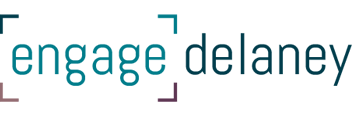A quick, but powerful, tip for building rapport while learning to decide as a group
by Naomi Devine, Senior Designer + Digital Engagement Specialist
One of the first challenges any facilitator has, when working with a new group (or working virtually), is building rapport, capacity and trust to make effective decisions together. This starts by helping shape group norms (expectations and social behaviours) at the very beginning of your time together.
How does a group get there effectively?
If you guessed that it comes down to process design, you are correct. Let me break it down even further. You need to prepare a group to have thorough and dynamic discussions with each other, in order to identify potential points of misunderstanding and/or disagreement, well before a big decision moment arises.
Here’s how you do that.
- Introduce smaller-stakes decisions as frequently as possible (such as agenda acceptance) by asking the question in the negative:
- For example: “Is anyone NOT ok with adopting the agenda as presented?”
- Then wait 10 seconds. This part is also critical. Adults need time to process the question, decide if they disagree or have a question, and if they want to ask it, then to ask.
Why do you ask the question in the negative? It provides clarity – two ways. First, it calls upon people who are not in agreement or who have questions to raise them; then, you as the facilitator, can navigate each issue with the group as the issue is raised. Second, if you are in agreement, it is clear that you do not need to speak up.
If you have ever been asked the question in the positive, you can see how it creates confusion: Are you ok with this? For participants, if you agree, do you answer? If you don’t, do you answer? For the facilitator, if someone is silent does that mean they agree or disagree?
Using this technique often and right from the start helps shape group norms around decision making. Participants know the following can be counted on:
- the question will be clear;
- there will be enough time to consider a reply (this is a good time as a facilitator to take a long, slow sip of tea); and
- disagreements or misunderstandings will have a regular and respectful space to be aired and resolved.
Decision making itself is a much larger topic and process than just the techniques described above, but this process will help you and the group develop the norms and trust necessary for bigger decision making success. Please give this a try at your next meeting and see what happens to group dynamics! Let us know how it goes.
Want to learn more? Our Facilitating Engagement Plans course covers rapport building, decision making, managing conflict and facilitation techniques! Join us December 13 – 16, 2021.




